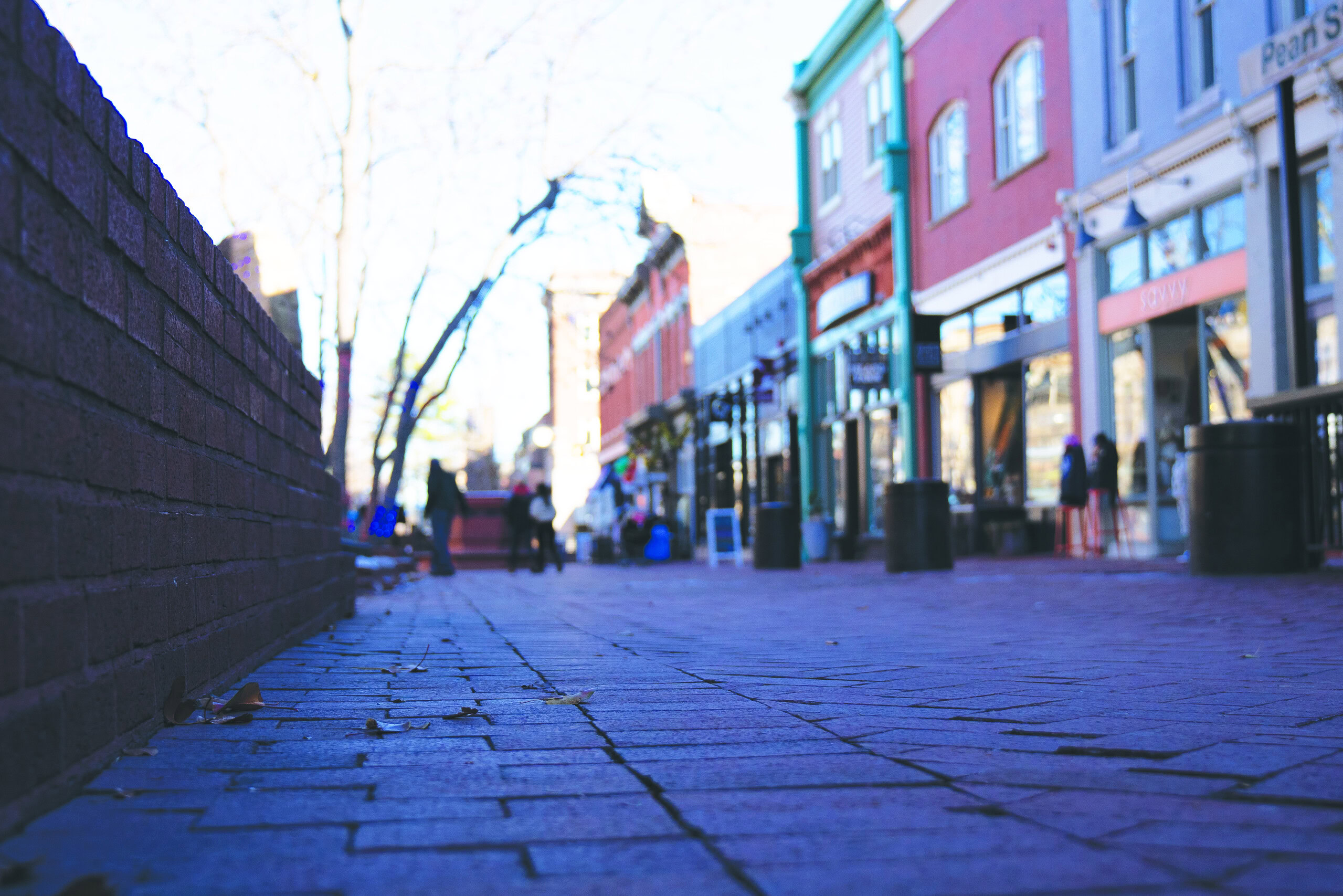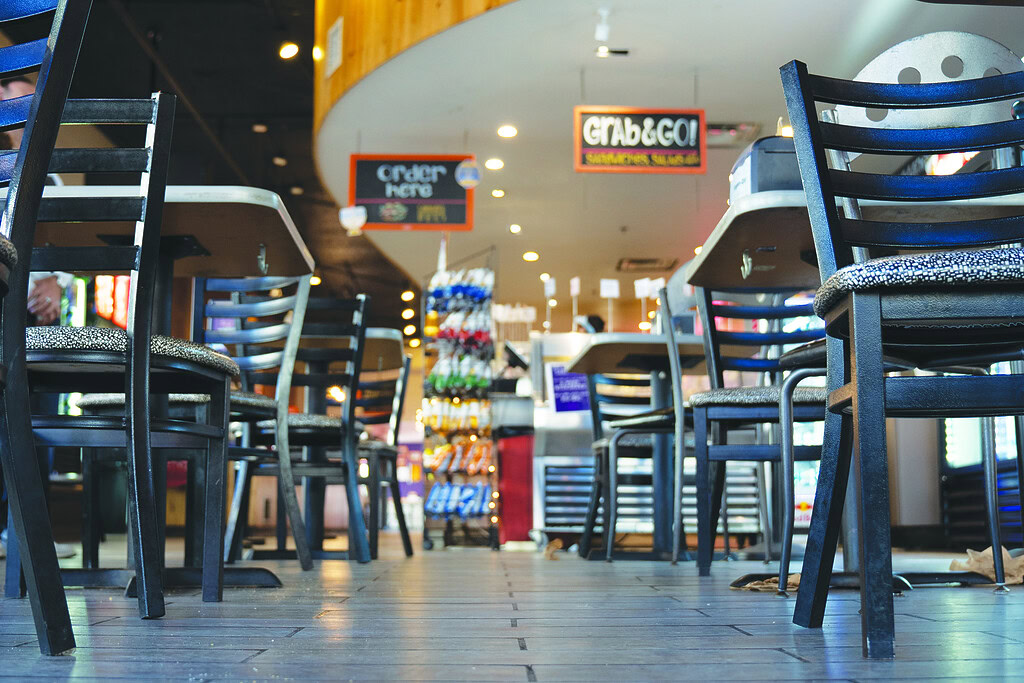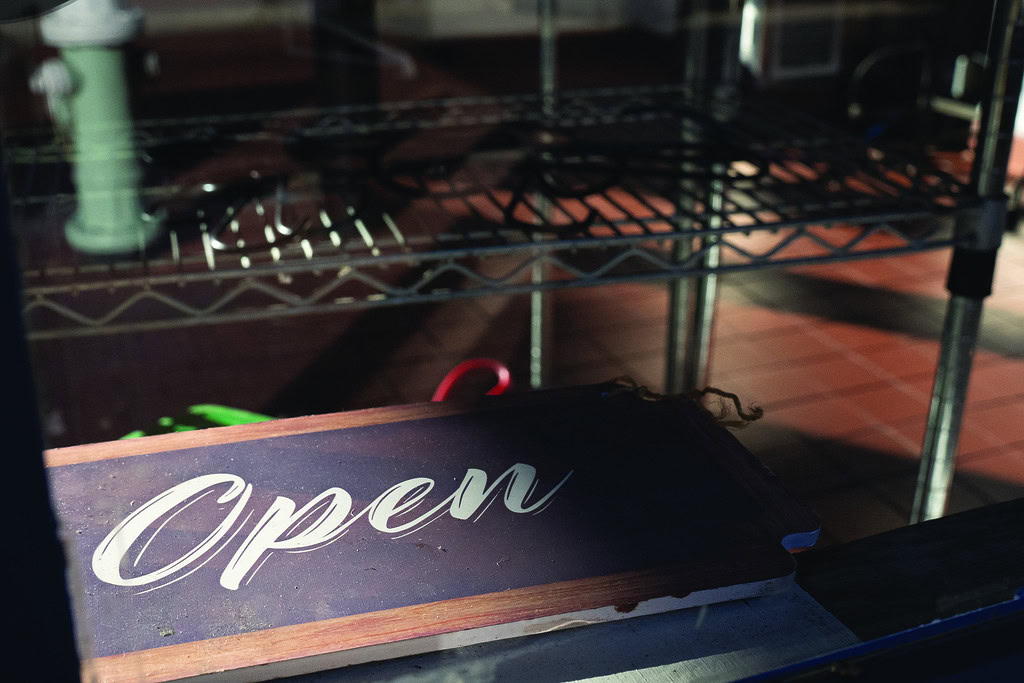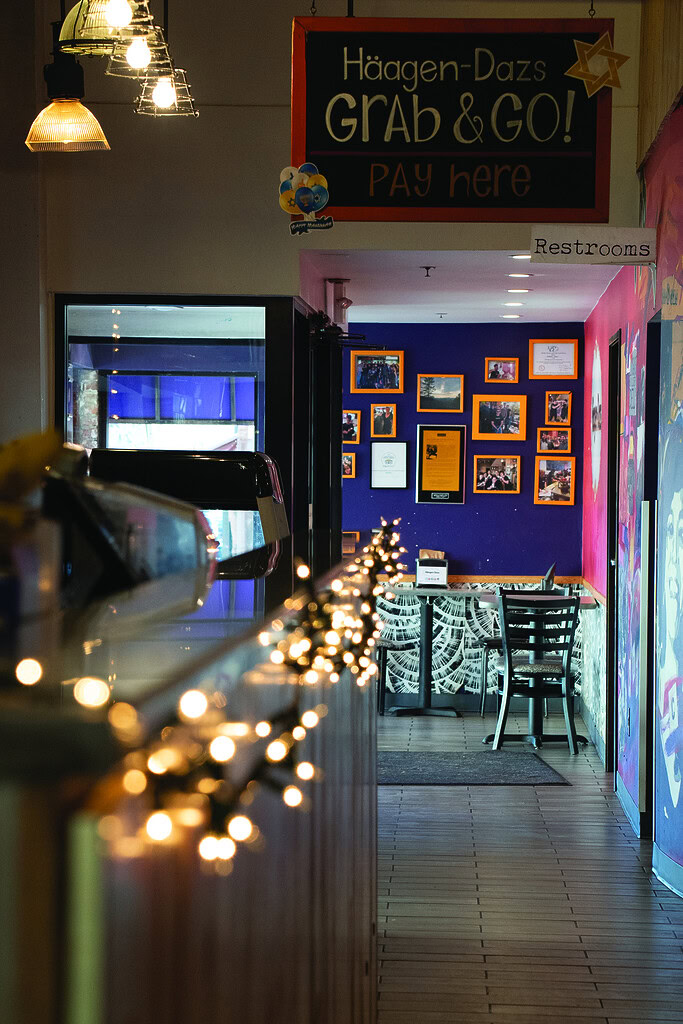
This is the first in a series of three articles on the topic of remote work, downtown vacancy and impacts to local businesses.
On a Thursday afternoon in early December, Lindsay’s Deli is largely empty. The lunch rush is over, and unlike in years past, things probably won’t pick up again for the day.
“Our main people work on the mall, either in the offices or in the retail,” said Jocelyn Wallen, general manager of the deli, “and 40% of them are just gone. Maybe they come in here and there if they have an office, but a lot of them are hybrid now.”
While the drop in foot traffic is not “life changing” for the business, Wallen said, it does have owner Lindsay Shaw changing the way she runs things.
“This is the first year we’ve ever really paid for marketing over the 20 years she [has] owned the shop,” Wallen said. “She always said, ‘I don’t do marketing.’ Now we have a marketing budget.”
Empty restaurants have become a post-COVID hallmark of downtown Boulder. With fewer workers commuting in, eateries are struggling to stay afloat, and large employers that once leased offices in Boulder’s downtown aren’t returning.
Office vacancy rates are four times higher than pre-pandemic. Flat sales and declining taxes are impacting businesses, property owners and the city budget, leaving local leaders desperate for solutions.
Like Lindsay’s Deli, Boulder finds itself thinking about something it hasn’t had to in decades: economic development.
“Boulder never needed an economic development plan because of how desirable we were,” said city council member Matt Benjamin. “Our economic development plan was a ‘for lease’ sign.”

Credit: Tyler Hickman
Empty offices everywhere
New work-from-home norms are one of the reasons commercial spaces remain empty.
According to a recent Axios analysis, Boulder leads U.S. metropolitan areas in remote work, with 28.1% of Boulderites working from home — more than double the national average of 13.8%.
“COVID has been a disaster for office space, quite frankly,” said Nate Litsey, a commercial real estate broker at Market Real Estate. “It was a huge disruption overnight. And today, downtown is about 33% vacant. Before COVID, we were at about 8%.”
The impacts of remote work are evident in traffic patterns, said Cris Jones, Boulder’s director of community vitality.
“Thursdays used to be our busiest days downtown because we would have the daytime employees and then weekend activities ramping up,” Jones said. “Now the busiest day is Saturday. Saturday has fully recovered since pre-pandemic levels, but the bulk of the week is still lagging during the day.”
Restaurants, too, illustrate the pre-versus post-pandemic difference.
“Before COVID, a restaurant could have three or four separate seatings,” said Bettina Swigger, CEO of the Downtown Boulder Partnership. “Now they have a 6-8 p.m. dinner rush, and that’s it.”
But nowhere are the effects of increased remote work more apparent than offices. The vacancy rate for downtown commercial real estate has hovered around 30% for over a year, according to the Boulder Chamber’s economic council quarterly report.
“We had so many tech companies occupying large spaces,” said Swigger. The available offices are too big to meet current demands. “The leases that are closing are for much smaller spaces. People are looking for 1,500 square feet as opposed to 30,000 square feet.”

Steering the boat
The issue is particularly acute for the second-story offices that sit atop ground-level retail, according to Litsey. Nearly a third of such spaces downtown are empty, he said.
Property owners and city representatives confirmed there are ongoing discussions about alternatives for second-story spaces in the form of theaters, restaurants or other community uses, which would bring more bodies downtown.
Jones said the city is considering how to make regulations more flexible to accommodate these new types of businesses. The previous city council had a focus on cutting regulations, and the planning department has staffed back up after COVID-era furloughs.
“We have to intentionally steer the boat in a direction that leads to greater prosperity for our community,” said Benjamin. “When businesses are thriving, the community is thriving.”
The city also supported an Affordable Commercial Pilot Program, which provided a total of $800,000 in grants for businesses impacted by COVID. Nonprofit art gallery The New Local received support from the program, as did community radio station KGNU, which purchased a new building downtown and is creating a space for local creators.
But, as Jones noted, $800,000 only goes so far.
“The program was targeted toward building owners and property managers, but the amounts were not compelling,” said Jones. “The goal of the program was to make sure there are spaces available for businesses that can’t afford the premium rates downtown.”
A survey conducted by the city in 2021 gathered data from employers and found that employee housing is the dominant challenge for businesses, followed by the cost of doing business and finding space.
Retail space downtown costs $30 to $45 per square foot. A comparable space along Longmont’s Main Street is going for $15 to $22 per square foot. Office space in downtown Boulder rents for $28 per square foot, compared to $17 in East Boulder and $16 in Longmont.
Future subsidies and support from the city are unlikely as it faces budget constraints. Boulder recently approved a notably lean budget that reflects rising operational costs, the expiration of pandemic-era stimulus funds, and flat sales tax revenue.
Downtown Boulder accounts for 10% of all city sales tax. The area barely surpassed its pre-COVID performance in 2023, according to year-end revenue reports. And so far in 2024, revenue is flat or slightly below 2023's numbers.
Downtown Boulder sales tax revenue by year
2019: $14.2 million
2020: $8.8 million
2021: $12.1 million
2022: $13.9 million
2023: $14.3 million
“Our budget is largely derived from sales tax,” said councilman Benjamin. “So if our businesses aren’t generating the revenue, the city’s budget is directly impacted.”

Costly conversions
At their spring retreat, where elected officials set their priorities for the next two years, council members put economic development near the top of the list. Work started with a September community forum, held in partnership with the National Civic League, to gather input from residents.
“That was a really good first step to start to hear the short, medium and long-term solutions being recommended to us,” said Benjamin. A few interventions being considered are financial assistance, changes in zoning and land use, and other economic policy considerations.
In October, Boulder’s Housing Advisory Board discussed the possibility of converting Boulder’s empty office space into homes — a two-in-one solution for struggling businesses and the city’s housing crisis. But architects and other planning professionals note the many challenges to such conversions, including the wildly different layouts and building codes for homes versus businesses.
“It doesn’t really pencil out for what you would have to pay to retrofit the building to be residential,” commercial realtor Litsey said.
Even in cases where the goal is to maintain office space in its current form and just update the property, the perceived difficulty of navigating the city’s red tape is a barrier.
“The permitting process adds a whole new level of uncertainty,” Litsey said.
Boulder’s permitting process is “not the fastest,” said Daniel Aizenman, director of development and design with Boulder real estate firm Conscience Bay Partners. But it’s also “not the slowest.”

‘A reset’
For some property owners, the best bet is to make their existing spaces as attractive as possible. Aizenman said Conscience Bay has invested in adding amenities like showers, kitchens, patios and elevators to their commercial office spaces to try and lure workers back.
“The buildings that have high-quality space and good amenities are actually full,” Aizenman said. “Companies are looking for a refreshed, better space to attract their employees back to the office.”
Boulder’s historic downtown works against itself in this regard, Aizenman said, “with buildings that are very hard to remodel.”
A bigger stumbling block to bringing workers back might be Boulder’s high cost of living, where the average house costs over $1 million. In an April 2023 discussion about down payment assistance, city officials shared that homebuyers need to earn $270,000 a year to buy a median-priced home.
“That’s an enormous competitive disadvantage Boulder has when compared to other cities in the state or in the country,” said Aizenman.
Litsey shares Aizenman’s concern about affordability, pointing to the number of people who have moved out of Boulder into the surrounding, more affordable areas. According to transportation data from 2022, 66% of people who work in Boulder live somewhere else.
Litsey believes companies move their offices to the outskirts of Boulder instead of downtown to make coming to work easier for employees. The Arapahoe corridor, on the eastern edge of the city, was home to 40% of Boulder jobs in 2019, according to city data.
There are some hopeful signs that conditions may improve — or at least not get any worse. According to JLL, a global real estate services company, office space vacancy levels across the United States went down nationwide in the third quarter of 2024, for the first time in over five years.
But hybrid and remote work are likely here to stay. Though the amount of full-time U.S. workers who are completely remote seems to have stabilized around 20%, the number of hybrid workers continues to rise. It’s currently between 40% and 45%, according to reporting from The Colorado Sun.
“There’s a reset in office space,” said Aizenman. “My guess is 20 to 25% of office space will never be back as office space.”
“We have one of the best downtowns in the country,” he continued. “It has all the fundamentals of a great downtown, but that doesn’t mean we rest on our laurels. We need to double down on imagining what the future of our downtown and what the future of work will be.”
Tyler Hickman contributed reporting.
